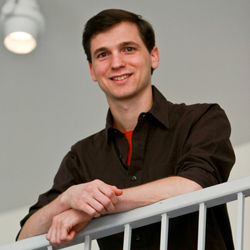
MSN usability researchers were stumped. Their usability lab had tested just about every aspect of its MSN portal and had been pleased to find that it consistently scored higher than its competitors. Yet a user base didn’t flock to MSN — they simply could not attract and retain as many users as they wanted. Then Clay Shirky relayed the million-dollar question: Were these tasks that users actually wanted to do? Or were these highly usable aspects of the site going to remain unused because nobody wanted to use them? There was a gaping hole between usability and usefulness.
In a keynote delivered to this year’s ACM conference on Computer Supported Cooperative Work (CSCW), author and academic Clay Shirky captured this question in a distinction between work and Work. (Capital-W) Work is what we have considered for years: your boss tells you to do something, you do it, and you get paid. By contrast, (little-w) work is motivated by inherent interest and generally unpaid. Think of the difference between an Encyclopedia Britannica editor doing Work, and a Wikipedia editor doing work during spare hours. Big Work drives the economy; little work drives the Internet. Big Work builds skyscrapers; little work generates a half million fanfiction stories about Harry Potter.
Clay argued that user testing techniques developed over the past 25 years for Work no longer apply for work. We shouldn’t be asking, "Can you complete the task?" but rather "Are you motivated to do it in the first place?" Excel needs usability testing because people are forced to use it for Work; technology for work instead needs to understand users’ underlying motivations.
Extrapolating on my own here: usability is an important refinement technique when you have a good idea, but it is a horrible determiner of utility on a grander scale. (Sure, pay me $10 for a lab study and I’ll use anything for an hour!) Usability is a local hill-climbing algorithm. We need techniques to make and evaluate that miracle motivational leap, whether it’s derived from the design process or social science. Develop that and you could save thousands of man-hours developing tools that nobody will ever want to use.
I’m a Ph.D. student in MIT’s Computer Science and Artificial Intelligence Laboratory, one of three graduate students who will be blogging this year’s CSCW conference in Savannah, Georgia. CSCW is a premier venue for presenting research in the design and use of technologies that affect groups, organizations, and communities. We look forward to relaying the most exciting bits of research to you! (Also, personally, I’m glad to be in slightly warmer climes than Cambridge, Massachusetts.)



Join the Discussion (0)
Become a Member or Sign In to Post a Comment